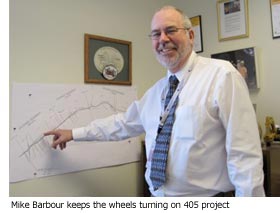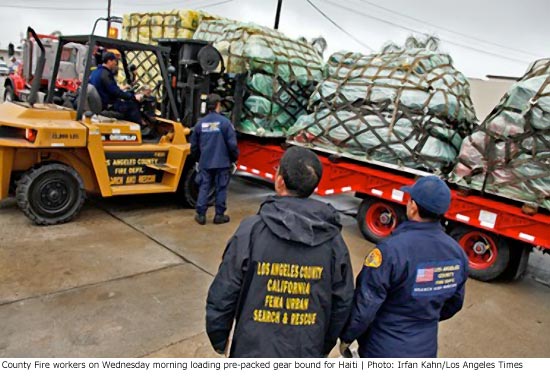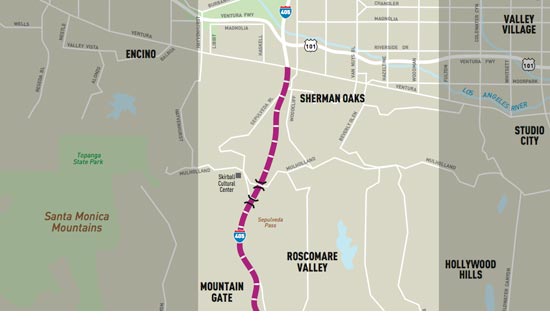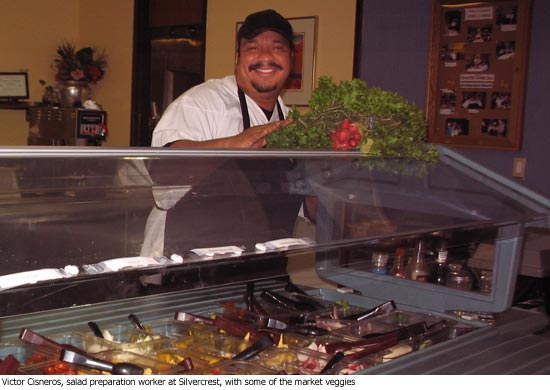Next stop Haiti for L.A. County rescue team [updated]
January 13, 2010
An elite Los Angeles County Fire Department search and rescue unit prepared to fly to a devastated Haiti Wednesday night to aid victims of the magnitude 7 earthquake, helping fulfill President Obama’s pledge that “we stand ready to assist the people of Haiti.”
The 72-member heavy rescue team, called California Task Force 2, is one of two U.S. disaster teams now being rushed to Haiti to aid in quake recovery efforts. The L.A. County team is expected to fly out at about 9 p.m. Wednesday en route directly to Haiti. The other team, from Fairfax, Virginia, departed earlier Wednesday afternoon.
“It’s really an honor that we’re recognized as being ready, able and trained to respond to these disasters,” said Fire Chief P. Michael Freeman. “It’s nice to realize that our sphere of helping can be so far-flung.”
The Los Angeles County unit includes firefighters, paramedics, heavy equipment operators, search dogs and canine handlers, communications and logistics specialists and hazardous material experts. In addition to County fire personnel, the team will take structural engineers and three emergency-room doctors. The task force is packing more than 27 tons of medical and rescue equipment.
The L.A. team’s expertise includes rescue and recovery operations under fallen structures—like the thousands of collapsed and partially collapsed buildings in and around the Haitian capital of Port-au-Prince. The team won’t know its precise mission until it hits the ground Thursday, Freeman said.
The task force has a rich history. In addition to local disasters, such as the Northridge earthquake in 1994, the task force was dispatched to Oklahoma City following the 1995 bombing, New York City after 9-11 and the Gulf Coast following Hurricane Katrina in 2005. Overseas, the task force flew to Sri Lanka in 2004 to aid victims of the Indonesian tsunami. A small unit took rescue equipment to China to dig out of the 2008 Sichuan earthquake
Firefighters who want to join the team must take training courses on their own time—on top of their normal duties. The department maintains a practice center with concrete debris at its Del Valle training facility near Santa Clarita. “Two years ago,” Freeman said, “we actually had United Nations experts visit us for two days to certify us for urban search and rescue.”
How long the Los Angeles team will remain in Haiti isn’t yet clear. Traveling with food, shelter and other equipment, the team can operate independently even under the worst conditions. “They are self-sufficient for 14 or 15 days,” said county fire Inspector Steve Zermeno, and can be resupplied again to extend their stay.
The L.A. and Virginia teams are heading to Haiti at the request of the U.S. Agency for International Development, which supplies economic, trade, agricultural and health assistance overseas, as well as disaster aid. Freeman told the Board of Supervisors that the federal government will reimburse the county for the mission’s cost. Despite the deployment, plenty of search and rescue workers will remain behind to respond to local disasters, he said.
As the L.A. County team assembled its equipment at a county fire facility in Pacoima Wednesday, county officials coordinated timing and logistics with the federal government. The task force will depart by military transport from March Air Reserve Base, near Riverside.
[Updated 1/14/09]
Flying through the night, Los Angeles County Fire’s urban rescue and recovery task force arrived safely Thursday morning in Haiti’s capital of Port-au-Prince. Once on the ground, leaders of California Task Force 2 met with disaster relief officials to receive briefings and coordinate activities.
In Los Angeles, County Fire Chief Freeman expressed confidence the task force, with its specialized training, will be able to extract victims from collapsed buildings and save lives. “Based on the media pictures we’ve seen,” he said, “there are a lot of people trapped not too deep in the concrete rubble that we’ll be able to reach successfully.”
County to Arnold: Don’t tread on us
January 13, 2010
Gov. Arnold Schwarzenegger’s latest budget proposal, which would deliver another round of deep cuts to social welfare and health programs, drew the ire of the Los Angeles County Board of Supervisors on Tuesday. First District Supervisor Gloria Molina, for one, called the proposed cuts “terrifying.”
The supervisors pledged cooperation with the governor and Legislature on the 2010-11 state budget to ease the pain as much as possible. But they were clear in calling on Sacramento to begin making systematic fixes to the budget process to avoid shifting pain and problems to county residents.
“We now have a $20 billion deficit that is affecting every city, county and school in the state,” Fifth District Supervisor Michael D. Antonovich noted during the board’s weekly meeting. He said the “rainy-day fund” that the supervisors created to help weather fiscal emergencies isn’t big enough to “withstand a tsunami that is coming from Sacramento.”
Third District Supervisor Zev Yaroslavsky chided Schwarzenegger for shifting blame to California’s congressional delegation during the governor’s Sunday appearance on “Meet the Press.” “This is not Washington’s fault,” Yaroslavsky said. “The state got itself into its own mess.”
Calling the budget crisis “gargantuan,” Second District Supervisor Mark Ridley-Thomas blamed the two-thirds rule, the state’s constitutional requirement that all budget and tax measures must pass by a super-majority. “Unless that’s changed, I’m sorry to say, we will be here year after year in a similar predicament,” Ridley-Thomas said.
Fourth District Supervisor Don Knabe said that by slashing funds to mandated programs partially funded by federal matching funds, California would be throwing away federal money for services the county is required by law to provide. He called the situation “extremely frustrating,”
For Zev’s remarks, watch the video below.

Meet Metro’s man on the 405 project
January 12, 2010
It wasn’t that long ago that Mike Barbour was in the midst of rocket attacks as an Air Force reservist working on projects like rebuilding bombed out bridges or constructing temporary aircraft hangars in Iraq.
Now he’s under another kind of pressure, of the diplomatic and logistical variety, as Metro’s top guy on the 405 Sepulveda Pass widening project—a multi-jurisdictional, three-year undertaking that will create a 10-mile northbound carpool lane between the Santa Monica (10) and the Ventura (101) freeways.
Along the way, it will have a profound impact on commuters traveling one of the nation’s most heavily traveled freeways, and also will significantly affect the surrounding neighborhoods and businesses. It’s a huge job that requires deft coordination among agencies and departments and a straight-shooting approach to communicating with the area’s well-informed–and often vocal–residents.
Enter Mike Barbour.
Barbour, 56, who joined Metro just a year ago, figures it was his unique set of highway design and construction experiences—and not his time in a war zone—that made him the right man for the job of overseeing every facet of the complex project.
Still, it couldn’t hurt.
At his first meeting with representatives of homeowner groups, he encountered a contentious crowd but ended up making a positive impression.
“He kept his cool,” says Milton Miller, past president of the Bel-Air Association and the homeowner group’s representative on the Community Advisory Committee that is working with Metro on the 405 project. “He acted like a gentleman. He seems calm and measured, and pays attention. My impressions are positive. He didn’t try to hog the presentation and say, ‘This is about me.’”
Now, as eight weeks of night work begin on the 405, setting the stage for construction to begin in earnest in March, Barbour finds himself at the center of a high profile and high stakes enterprise that will be closely watched across the region.
The inaugural construction phase will change life as we know it on the already congested 405. “It’s a big deal…The people that drive this, that live there, haven’t been impacted and now they’re going to be impacted.”
The impact hits on Wednesday, Jan. 13, at 7 p.m., when, weather permitting, crews will start delineating new, narrower lanes on the freeway to accommodate a construction zone.
 The first full freeway closure is set to occur after midnight, in the early morning hours of Jan. 14, with all lanes scheduled to reopen by 6 a.m. [Updated 1/13/10: The start of work on the 405 is being delayed for a second night because of rain. Learn more here.] Updates also are being posted on Twitter. In addition, Metro has expanded its community relations staff on the project and has established a hotline for public inquiries, (213) 922-3665.
The first full freeway closure is set to occur after midnight, in the early morning hours of Jan. 14, with all lanes scheduled to reopen by 6 a.m. [Updated 1/13/10: The start of work on the 405 is being delayed for a second night because of rain. Learn more here.] Updates also are being posted on Twitter. In addition, Metro has expanded its community relations staff on the project and has established a hotline for public inquiries, (213) 922-3665.
In dealing with the community, Barbour says, the important thing is to stick to the facts in the project plan. “All the people on the Westside understand what’s going on,” he says. “You need to be very straightforward.”
At monthly meetings with the Community Advisory Committee, Barbour says he tackles “every issue under the sun,” including such questions as: “Are you closing my off ramp? Are you affecting me? Can emergency equipment get through?” (For that last question, he brought in police and fire representatives to explain how they will respond.)
There are also meetings for the community as a whole, such as an open house planned for Jan. 20 at the Westwood Recreation Center.
The project, a partnership of the Los Angeles Metropolitan Transportation Authority (Metro) and the California Department of Transportation (Caltrans), is expected to cost $1.034 billion, with $189.9 million coming from the American Recovery & Reinvestment Act of 2009. The rest will flow from state and other federal sources.
Barbour’s job, which pays $200,000 annually, involves coordinating the work of all agencies with a role in the project—including Caltrans, the city Department of Transportation and L.A. County.
“It’s really trying to knock down the barriers for the contractor (Kiewit Pacific Co.),” says Barbour, whose official title is Executive Officer, Highway Project Management. “One of our main concerns is keeping the project on schedule.”
He’s a true believer in the importance of completing the northbound carpool lane through the Sepulveda Pass and creating an unbroken high-occupancy vehicle route from the Orange County line north to the San Fernando Valley.
“The HOV lane is a really big impact,” he says. “Three hundred thousand people come through there daily.”
Metro estimates that daily carpool commuters could save about 10 minutes a day—50 minutes a week—when the project is completed in 2013. “It’s not a lot for an individual,” Barbour says, “but for 300,000 people—that’s a significant amount of money and time.”
Carpool lanes aren’t just a job for Barbour; they’re a passion.
He says he often grabs a colleague to travel with him so he can take advantage of the carpool lanes on the 105 or 405 as he shuttles between his main office at the Howard Hughes Center near the airport, the job site in Brentwood and Metro’s downtown Los Angeles offices. And when he’s in the carpool lane, “I can just blow by everybody on the 105.” (Get it? He likes carpool lanes.)
Before joining Metro, Barbour, who grew up in Southern California, worked for 8 years as a consultant in the private sector. Earlier, he put in 18 years at Caltrans, including a stint as acting deputy director for design for District 7, which includes Los Angeles and Ventura counties.
If you’ve ever been on the 110/Adams Boulevard HOV lane near downtown Los Angeles, or the Carquinez suspension bridge in Northern California, you know his work.
Before Barbour retired as a major in the Air Force Reserve, he was deployed twice to Iraq—in 2003 and again in 2007. “I wouldn’t trade it for anything,” he says.
Barbour still has a home in Northern California, where he spent much of his career with Caltrans and where his wife works as an attorney. He says he’s looking to buy a place in L.A. soon.
Meanwhile, he’s got lots of 10- and 12-hour days to keep the gears moving on the 405 project. “Everybody wants to get a greener planet,” he says. “But what we’re stuck with is a society where everybody commutes. If you have it, you’ve gotta fix it.”
Posted 1/12/10
—————————————————————————————————————————————–
READ RELATED 405 NEWS
Turning quarantined lemons into lemonade for Santa Monica seniors
January 11, 2010
One person’s quarantine is another’s tasty green feast. Or at least a nice contribution to the daily salad bar.
That’s what the people from the Salvation Army’s Silvercrest senior residence in Santa Monica started receiving from grower/vendors at the Santa Monica Farmer’s Market.
The market is one of the country’s premier venues of its kind and attracts top chefs from throughout the area. But since October 29, the market, along with 16 others on the Westside, has been under quarantine due to the discovery of mated female Mediterranean fruit flies in a local backyard. The quarantine rules mean that unsold produce on the Medfly host list can’t return home with the farmers after the market day is finished, if it has been on display. Which brings us to the market’s arrangement to help bring the garden-fresh bounty to local organizations such as Silvercrest.
You might say it’s making lemonade out of lemons—but since this is the Santa Monica Farmer’s Market, better make that pomegranate-infused lemonade with a sprig of fresh rosemary.
Laura Avery, who supervises all of Santa Monica’s farmers markets and manages the Wednesday market, said farmers are being judicious in how much produce they display for sale, given the restrictions. Produce left on the tables at the end of the market day is being offered to several community organizations in addition to Silvercrest, including a soup kitchen and Step Up on Second, which assists people with serious mental health issues.
As for the farmers, Avery said, “they’re glad to know it’s going to be used.”
“We’re excited about this relationship,” said Emily Seiler, administrator of the Silvercrest Residence, which offers apartment living on Fifth Street to 130 low- and moderate-income seniors. “Every Wednesday, at 1:15ish, we’re going to be arriving there with pickup trucks and boxes, and visiting each booth.”
The locally grown fruits and vegetables are a welcome addition to the lunches and dinners served to Silvercrest residents each weekday. “Certainly it’s going to reduce our produce cost,” Seiler said, adding that she was pleasantly surprised by this Wednesday’s first day haul.
“We got a box of oranges, a bag of lemons, some of those grape tomatoes, a half box of pomegranates, 5 or 6 groups of radishes, a box of lettuce of various types, 10-12-15 sprigs of rosemary,” Seiler said. “Every one of our meals has a full salad bar.”
Finding a use for the oranges is easy. Residents can take one back to their apartments for breakfast or a snack if they don’t eat it at lunch. And the lemons are sliced daily for iced tea. As for the more exotic ingredients, well, that promises to be a welcome challenge for the center’s cook.
“What she’ll do with the pomegranates,” Seiler said, “I’m actually not sure.”
Section 8 by the numbers
January 11, 2010
Section 8 is a federally-funded rent-subsidy program for low-income tenants administered in the county by the Housing Authority of Los Angeles County. The program, at a cost of $230 million in the county, helps needy families, as well as elderly or disabled adults, live in homes and apartments they couldn’t otherwise afford.
Qualifying renters pay about 30 percent of their monthly income toward the rent. Using federal Department of Housing and Urban Development funds, the Section 8 program pays the balance, up to prescribed limits, directly to the landlord. The Housing Authority, an arm of the County’s Community Development Commission, distributes rent vouchers and is responsible for making sure that tenants meet the program’s requirements. The Housing Authority also is supposed to conduct annual inspections of rental units.
The program can be complicated, but here are the basics:
- The program is named for the section of the U.S. Housing Act of 1937 that laid out the first federal rent-subsidy program.
- L.A. County’s Housing Authority administers vouchers for about 20,900 units in unincorporated areas and 62 cities within the county. It also has a contract with six other cities, including West Hollywood, to distribute 1,000 vouchers through their housing agencies.
- Annual income levels for most tenants can not exceed $16,650 for a single person or $23,800 for a family of four—30 percent of the county’s median income. A much smaller percentage of solo renters can make up to 50 percent of the median income, or $27,750, as a way to guarantee more economic diversity.
- Maximum rents range from $943 for a studio to $2,295 for a four bedroom unit.
- Roughly 99 percent of L.A. County vouchers are in use at any given time.
- The county closed the Section 8 waiting list on December 1 to avoid giving new applicants false hopes of getting a voucher. With only 250 units becoming available every month, the current wait for a voucher is five years.
Fixer-uppers nothing new for no-nonsense housing boss
January 11, 2010
 When Sean Rogan took the top job at the county’s Community Development Commission and Housing Authority in May, its long troubled Section 8 rental housing program was on the comeback trail.
When Sean Rogan took the top job at the county’s Community Development Commission and Housing Authority in May, its long troubled Section 8 rental housing program was on the comeback trail.
But the new executive director quickly let staffers know that just bringing the rental subsidy program back to par wasn’t good enough.
With a mandate by the Board of Supervisors he quickly set about transforming the county’s Section 8 program so that it would be deemed a “high performer” by the federal government, entitling the county program to save money and earn greater autonomy in meeting federal requirements.
High goals and impatient determination are hallmarks for Rogan, 47, who cheerfully calls himself a “Type A personality.”
“I find the challenge of taking a troubled program and turning it around extremely satisfying,” says Rogan, who shows up for work most mornings at 6:30. “While we’ve made great strides in the six months I’ve been here, I’m not going to be satisfied until we are a high-performing agency.”
To better understand the Section 8 program, click here for a primer.
Rogan took the L.A. job after serving as deputy director of Oakland’s Housing & Community Development department, where he worked to repair home ownership and rehabilitation loan programs. His former boss called Rogan a stable influence at the once-troubled agency. Rogan worked under six directors in four and a half years.
“He’s very smart,” says Walter Cohen, Rogan’s last supervisor in Oakland. “He expects performance, and sometimes you don’t make yourself popular by setting the bar high.”
At the CDC, Rogan leads 650 employees and manages an annual budget of half a billion dollars. The CDC is a wide-ranging organization that runs the county’s Housing Authority as well as its economic redevelopment programs.
But it was the $230 million Section 8 program that, before Rogan’s arrival, had gotten all the negative attention.
The Section 8 program subsidizes rent payments to over 20,000 low income families and individuals in unincorporated L.A. County and 62 cities, funneling federal money from the federal Department of Housing and Urban Development to private landlords through a voucher system.
The county’s major administrative job is to find qualified renters. Staffers must inspect each unit annually for safety and other factors and calculate the proper rent subsidies. And they must keep as close to 100 percent of the vouchers in use as possible.
That’s exactly what the county wasn’t doing well. In 2006, HUD officials declared the program “troubled” after reviews and audits discovered that the staffers were failing to accurately inspect each rental unit and verify each client’s financial qualifications on a timely basis, as required.
Worse, more than 15 percent of the vouchers allotted to the county weren’t being handed out.
As a result of the mismanagement, HUD levied a $1 million penalty against the county program and demanded fixes. The previous executive director replaced the Section 8 director and began making strides to correct the problems by, among other things, speeding up inspections and making sure more vouchers were distributed to renters. The Board of Supervisors, demanding that the shortcomings be fixed, allocated extra resources and met with HUD officials to negotiate a corrective action program.
Last July, just weeks after the program earned its highest score ever from regulators, the program’s “troubled” rating was lifted for the first time since 2006.
“The lion’s share of the credit” for the turnaround, Rogan says, should go to CDC staffers and executives who oversaw the improvements. They include: Dorian Jenkins, now assistant executive director for CDC’s Housing Authority; Maria Badrakhan, director of the Housing Management Division, and Margarita Laras, director of the Assisted Housing Division.
Rogan now wants the program to win HUD’s “high-performer” rating by 2011. To do that, he believes he needs to institute cultural and practical changes.
In hiring, he’s ending a perception of “social promotions” in which agency managers were seen as elevating favored employees without interviewing potential competition. Now, he says, all vacancies are posted in an effort “to increase transparency and competition.”
He’s also pushing managers to road test new ideas or policies with their staffs before implementation. “A good idea is a good idea,” he says. “It doesn’t have to come from the top.”
Then there are the culture changes. Traditionally, Section 8 tenants weren’t penalized when they missed appointments for home inspections or did not submit timely “re-exams” of their finances to show they remained eligible.
Such delays wasted time and money. So this fall, Rogan and his staff imposed a requirement that tenants who don’t fulfill their obligations must attend a counseling class. Those who miss a second inspection appointment or a “re-exam” deadline may lose their vouchers.
“If you aren’t going to follow the rules, then—guess what?—there’s a person right behind you who will,” he explains. Rogan says “hundreds” of clients have been attending the classes.
Outside the office, Rogan has had his challenges, too.
Married with two children, he moved to a house in La Canada in August. No sooner was his family settling in than the giant Station Fire swept through the mountains above town. His neighborhood wasn’t immediately threatened, but the smoke and ash billowed so thickly that it proved to be a health risk for his asthmatic daughter.
Rogan moved the family to a friend’s home for four days. Still, months later, Rogan says reminders of the fire persist. Gusty winds still kick up ash and dust that just won’t go away.
But when it comes to the Housing Authority, his home-away-from-home, Rogan is confident the dust is finally settling.
Little truck, big job, for Westside subway planning
January 7, 2010
 That rumbling outside isn’t the Big One—just a little visit from the minivib.
That rumbling outside isn’t the Big One—just a little visit from the minivib.
The “minivib”—a small truck that plays a starring role in seismic testing for the Westside Subway extension—will be paying a visit to Century City and Westwood neighborhoods next week. Its “field seismic investigations” will take place on Century Park West and Warnall Avenue on Jan. 12 and 13, beginning at the parking entrance for 1930 Century Park West and ending on Warnall at Eastborne Avenue. On Jan. 14 and 15, the work starts on Selby Avenue, beginning at a point between LaGrange and Missouri Avenues and ending at North Temple Way.
The seismic testing will produce an electronic image of the soil, including rock layers, near-surface faulting and information on bedrock elevations and depths. The process involves placing sensors along the street and then having the minivib press and vibrate a “plate” every two feet to obtain readings of the vibrations.
Ultimately, the work will help determine placement of subway tunnels and stations in Century City and Westwood. Anyone with questions about the testing can leave a message at (213) 922-6934 or email Metro via the “Contact Us” link here. For urgent matters, call (323) 889-5311.
About 240 letters have gone out to residents alerting them of the work, which will take place between 10 p.m. and 6 a.m. The night shift is necessary, according to Metro, to avoid competing vibrations from daytime traffic and to minimize disruption on nearby Santa Monica Boulevard, which will be reduced to one lane in each direction during the testing.
Metro says the noise will be moderate–not more than 70 decibels, in the range of daytime traffic volume–and should take no longer than 30 minutes in front of any one residence.
It’s a busy week for after-hours transportation action on the Westside–on Tuesday night, work also will begin on the 405 Sepulveda Pass widening project, as crews begin delineating new, narrower lanes to accommodate a work zone for the construction of a northbound carpool lane. More information on that project can be found here.
The 405 report
January 4, 2010
Latest news
Updated 5/17/11: Plan now for huge summer 405 closing
Updated 3/03/11: A sharp U-turn on Mulholland
Updated 12/08/10: Wilshire 405 flyover ramps coming
Updated 10/12/10: Skirball Bridge demo—and detours—begin
Updated 05/05/10: Demolition time on Sunset
Updated 3/11/10: Some Westside bus passengers will soon be taking the scenic route.
And Metro would like to apologize for that in advance.
Starting in mid-March, patrons of various Metro bus lines in the Sepulveda Pass and West Los Angeles could be facing delays and detours due to the 405 Sepulveda Pass Widening Project, which will add a 10-mile northbound carpool lane to the freeway.
Bus lines that travel on the freeway and through the construction area will be affected off and on until the project’s completion, now scheduled for 2013.
Lines slated to be affected are as follows:
• Line 2-302: Sunset Boulevard
• Lines 4 and 704: Santa Monica Boulevard
• Lines 20, 720 and 920: Wilshire Boulevard
• Line 761: Sepulveda Boulevard and 405
Updates also are being posted on Twitter. Metro’s hotline for the project can be reached at (213) 922-3665.
Updated 2/9/10: Work on the 405 carpool lane project has been called off for tonight due to the rain. Weather permitting, it will resume Wednesday evening. Full information can be found here Updates also are being posted on Twitter. Metro’s hotline for the project can be reached at (213) 922-3665.
Updated 1/27/10: After-hours work on the northbound 405 carpool project is expected to resume tonight, Jan. 27, with the full freeway closing from midnight to 5 a.m. between the Santa Monica Freeway and Santa Monica Boulevard. Work is to continue on Thursday and Friday nights, with full freeway closures from midnight to 5 a.m. in the segment that runs from Santa Monica Boulevard to Wilshire Boulevard. All lanes should be reopened by 5 a.m. Saturday, Jan. 30. Full information on the closures, including detour maps, can be found here. Updates also are being posted on Twitter. Metro’s hotline for the project can be reached at (213) 922-3665.
Updated 1/22/10: If the rain ever stops, after-hours work to create a northbound carpool lane on the 405 will resume next week with at least three nights of full lane closures planned from midnight to 5 a.m. The work begins at 7 p.m. on Monday, Jan. 25, with all lanes closing after midnight on the segment of the freeway that runs from the Santa Monica Freeway to Santa Monica Boulevard. The next two nights will be devoted to the segment between Santa Monica Boulevard and Wilshire Boulevard, with full freeway closures again planned from midnight to 5 a.m. Workers need to delineate new temporary lanes and install concrete barriers so construction on the 10-mile carpool lane can begin in earnest. Once the temporary lanes are in place, and a construction zone is established, northbound drivers will have the usual five lanes available to them during the three-year project. Full information on the closures, including detour maps, can be found here. Updates also are being posted on Twitter. Metro’s hotline for the project can be reached at (213) 922-3665.
Updated 1/13/09: Because of rain, work on the Sepulveda Pass project to create a northbound carpool lane is now expected to begin on Thursday, Jan. 14, at 7 p.m. The first full freeway closure will take place in the early morning hours of Jan. 15, with all lanes scheduled to reopen by 6 a.m. The work will take place on the segment of the freeway between the Santa Monica Freeway (10) and Santa Monica Boulevard. Full information on the closures, including detour maps, can be found here. Updates also are being posted on Twitter. Metro’s hotline for the project can be reached at (213) 922-3665.
—————————————————————————————————————————————–
Surviving the night work on the 405
The lanes on the northbound 405 are about to get skinnier.
And, as with any New Year’s reducing regimen, there will be some pain before the gain.
Starting at 7 p.m. next Tuesday, Jan. 12, night crews will begin grinding off existing lane markings and restriping them in a narrower configuration to make way for a construction zone on the freeway. It’s the kick-off to eight weeks of intensive nighttime work on the 405 Sepulveda Pass widening project—which will ultimately create a 10-mile northbound carpool lane on the 405 between the Santa Monica (10) and Ventura (101) freeways.
After the new lanes are delineated, workers beginning Feb. 8 will spend four weeks installing “k-rail”—concrete barriers to create a work zone for the project. The work will take place from 7 p.m. to 6 a.m. on weekdays through early March, although bad weather could delay things. The entire freeway will need to be closed at various times during the next eight weeks; those closures will take place only between midnight and 5 a.m. Work will proceed in segments, and maps of detours for affected areas are expected to be posted here later this week.
The goal is to keep the same number of lanes available during construction as there are now—a crucial consideration given the heavy usage of the freeway. When the project is finished in the spring of 2013, it will provide a connecting link in the freeway’s carpool lane system extending north from the Orange County line. In the course of the project, workers also will realign 27 on- and off-ramps; widen 13 overpasses and structures; build some 18 miles of retaining and sound walls, and remove and replace bridge overcrossings at the Skirball Center, Sunset Boulevard and Mulholland Drive.
To help ease the pain—and to provide the opportunity for affected residents to troubleshoot the project as it moves forward—monthly meetings are being held with representatives of homeowner groups.














 Check for the latest closure information
Check for the latest closure information








